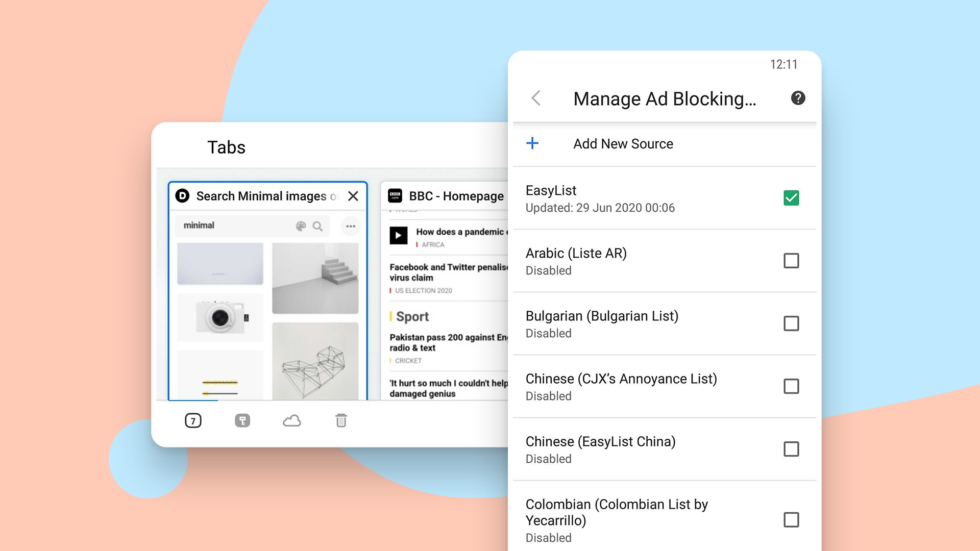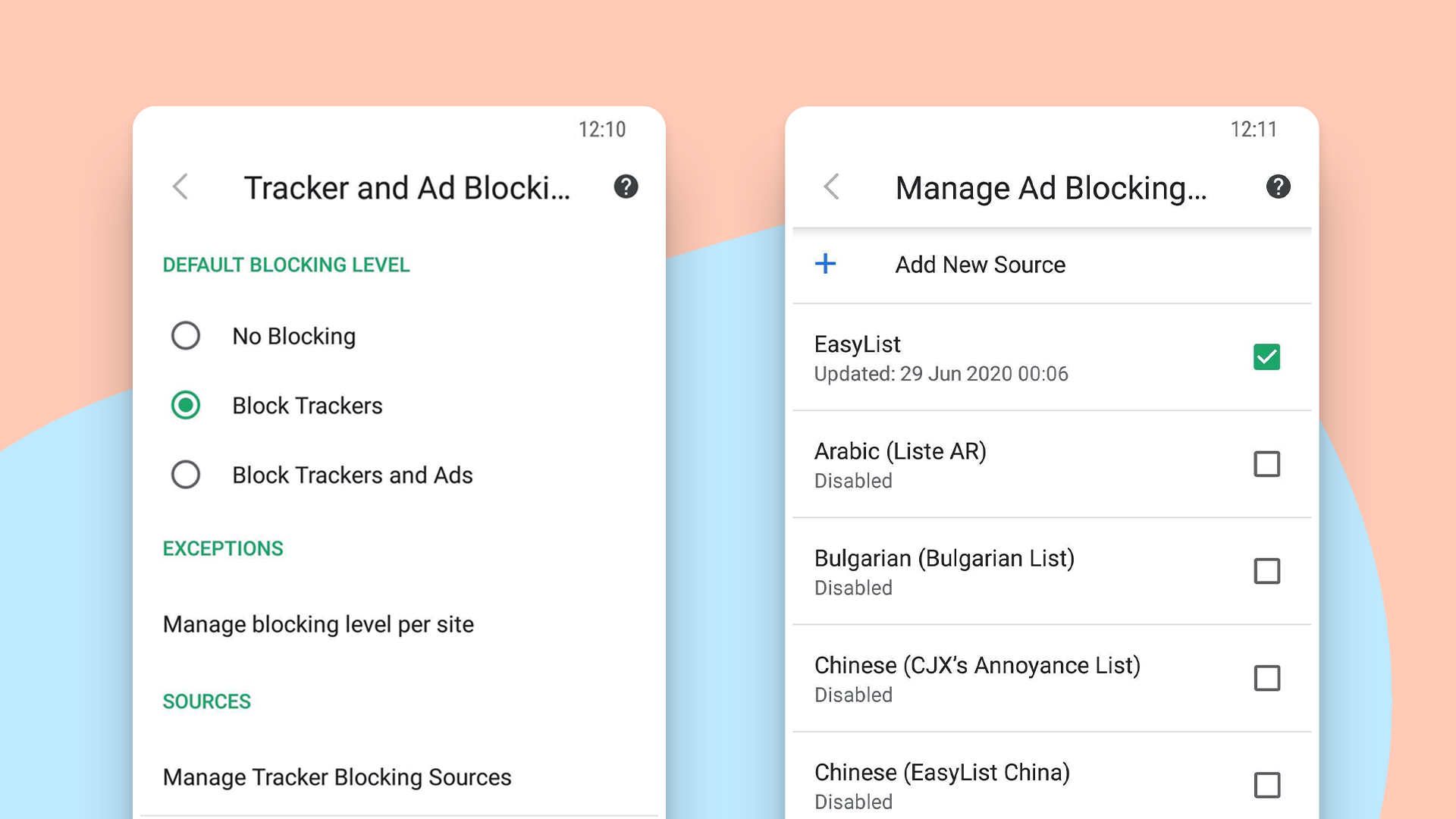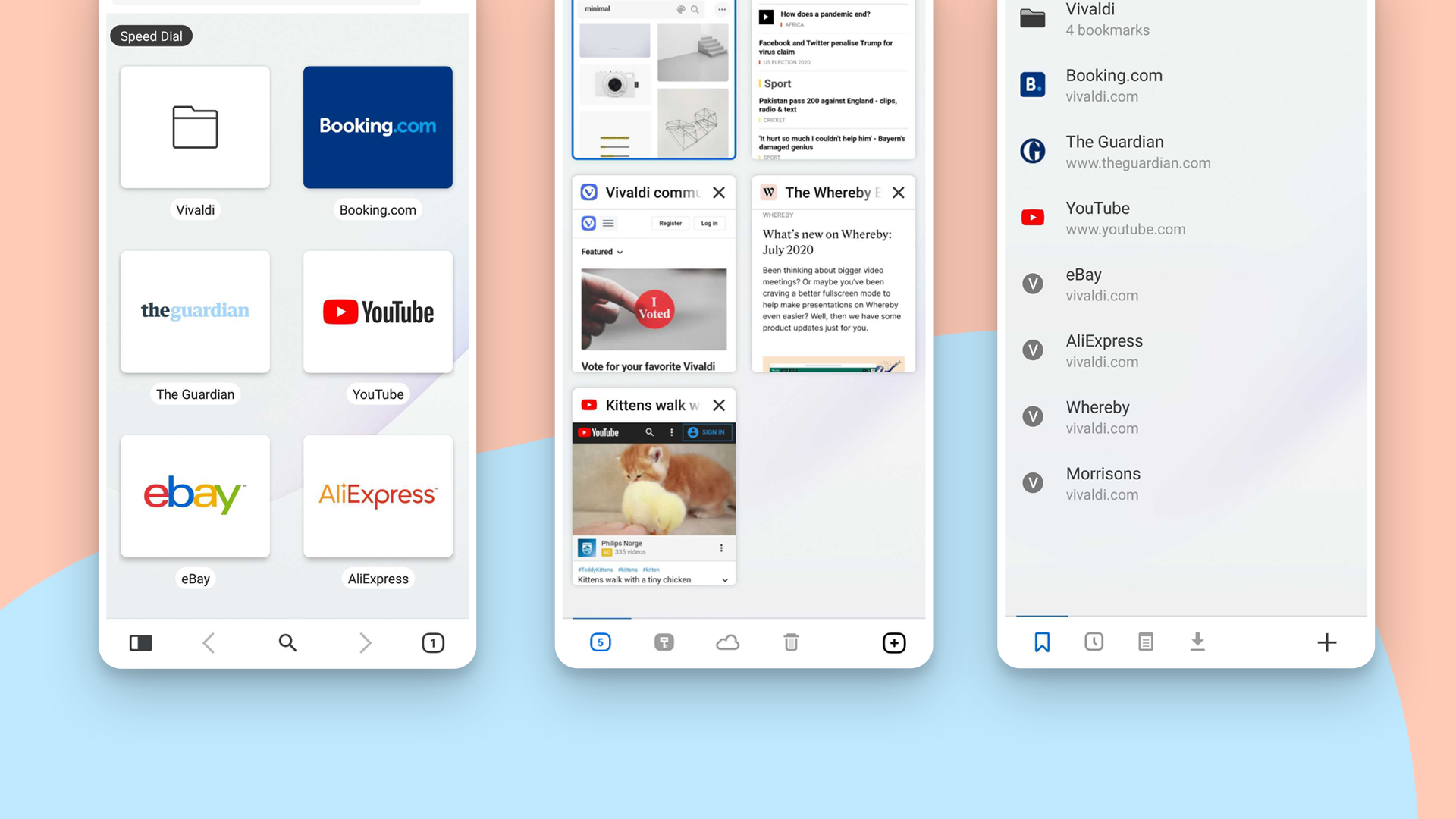
OSLO, Norway – August 12th, 2020: Vivaldi Technologies announces its new browser version on Android devices, expands the functionality of its built-in Tracker and Ad Blocker, moves buttons to switch between types of tabs to the bottom of the user interface, and includes stability fixes.
In Vivaldi 3.2, users can now enable and manage several blocking lists in the Tracker and Ad Blocker and even add their own custom lists of websites they want to block or unblock while browsing online. Users can now view and switch between normal, private, synced, and close tabs from the bottom.
Available for free on Android (5 and above), tablets and Chromebooks.
“Vivaldi is based on what our users like. It’s all about creating personal experiences while you browse with Vivaldi’s built-in features”, Vivaldi CEO Jon von Tetzchner says.
“With more functionality at the bottom and more granular control to protect your privacy, Vivaldi becomes even more powerful and easier to use on your Android device.”
Enhanced built-in Tracker and Ad Blocker
When the first beta of Vivaldi on Android was launched, the most requested feature was a Tracker and Ad Blocker.
The number of web trackers has skyrocketed. And is still on the rise. Users want to limit unnecessary tracking and browse a cleaner, faster web without trackers and ads.
The sheer scale of web tracking and data collection made Vivaldi launch its browser on Android with a built-in Tracker and Ad Blocker – a perfect solution for users to protect themselves from the ubiquitous trackers and unwanted ads.
Now Vivaldi takes a step further.
Users can enable more blocking lists in Vivaldi and even include their own custom lists.
This is because Vivaldi believes that users should always have the final say – how sites are displayed and which sites should know about them is ultimately the user’s choice.
The blockers in Vivaldi are based on blocking lists of well-known tracker URLs. Vivaldi stops requests to those URLs before they are sent.
A series of preinstalled blocking lists/sources in Vivaldi offer more choice to users and can be easily enabled/disabled with a simple tick. Furthermore, users can even opt for a country-specific listed source depending on their region or preference.

Importing and adding a custom list into the feature is simple and very similar to Vivaldi’s desktop counterpart.
With a quick set-up in Vivaldi Settings, users can activate/deactivate or remove an already provided custom list and make exceptions including any addition or change in the blocklists
Head to Vivaldi Settings and manage custom blocking lists under Privacy → Tracker and Ad Blocking → Manage Tracker Blocking Sources and Manage Ad Blocking Sources.
For the uninitiated, the integrated Tracker and Ad Blocker – one of the many built-in features in Vivaldi – can be easily enabled and disabled for websites through the shield icon at the left end of the Address field or globally in the Settings.
Users can also enable/disable blocking for specific websites according to their preference, and manage blocking levels per site either from the Address field or Settings.
Discover improved tab functionality
The feedback from people using Vivaldi has been fantastic. Inspired by that, Vivaldi strives to improvise every aspect of mobile browsing and puts more focus on ease and flexibility.
Some of the user feedback Vivaldi has received requests us to add more functionality at the bottom.
Thus, in the previous version of Vivaldi, switching between Panel functions, Bookmarks, History, Notes, and Downloads was moved to the bottom.
In this new version, Vivaldi has moved similar buttons for enhanced tab functionality to the bottom as well. These buttons allow users to switch between open, private, recently closed, or even synced tabs.

Users will find this functionality at the bottom useful as many rely on one-handed access to the main functions of the browser while browsing on their mobile devices.
“A consistent layout across the entire app results in the predictability and usability that we strive for. Our aim in putting all navigation bars at the bottom is to make browsing with key functionality in Vivaldi just a thumb away,” says Atle Mo, Lead Designer of Vivaldi on Android.
“Based on user feedback, we’ll continue to make the interface more intuitive and visually striking.”
Hello, ‘Tab Bar’!
The Tab Strip (Vivaldi’s real desktop-style tabs) has a new name – Tab Bar. We thus offer uniformity in addressing features across the desktop and mobile versions of Vivaldi.
Most browsers struggle when it comes to keeping track of open tabs. Breaking conventions, Vivaldi’s Tab Bar enabled by default, lets users view, open, and switch between tabs easily, just like on desktop browsers – a functionality that stands out in Vivaldi.
If users do not find this useful or need more screen space, it can be easily disabled in Vivaldi’s Settings.
